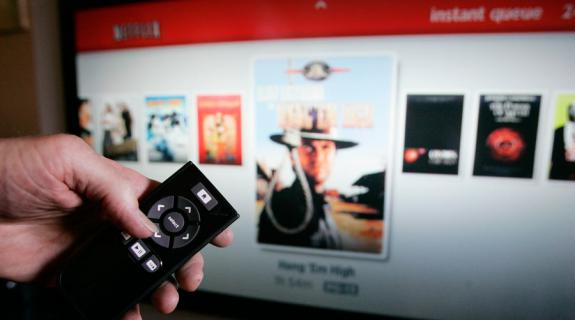Netflix has undergone a major experiment this year, looking for ways to ramp up quality of its streaming video for users without using any more bandwidth.
According to Variety, this experiment started with an internal contest. Netflix employees were challenged to tell the difference between two TVs playing the same TV show. One of the TVs streamed the show from Netflix’s current site, while the other TV featured the show streaming on a new technology Netflix has been working on for years that would save bandwidth but produce the same video quality. None of the employees could tell which was which.
And thus the experiment ramped up at the Netflix offices, with the goal of creating better-looking video content using less bandwidth.
The result of Netflix’s streaming boost could mean users saving up to 20 percent of their data—a not-so-insignificant number, considering almost one-third of all data during peak usage hours is from Netflix in North America.
The trick, according to Netflix, is to consider the bandwidth of the show or film, instead of the bandwidth of its users.
For example, encoding and preparing a cartoon for video streaming is very different from an action film. Car chases and superheroes are harder for Netflix’s encoding servers than a 2D children’s show, so Netflix is working to create a case-by-case basis that can make it easier for users to stream simpler fare, and makes it easier for Netflix to deliver the more complex content.
With the new streaming model, Netflix can set up different rules for encoding the shows and movies on its service, beyond just following rules for a genre or a TV show. Netflix’s idea is to encode everything down to each episode.
Netflix has been slowly releasing these newly encoded shows and movies to its service, testing it out with randomly selected users, most recently adding a limited number of titles to the service at large. By the end of the year, the streaming service plans to have 1,000 new titles added, with its entire catalog switching over to the higher quality titles by the end of 2016.
Read more at Variety.
Brief Take: Better-looking videos at a lower bandwidth is the ideal experience for most users who have to deal with less-than-desirable Internet or spotty connections.
[Image courtesy of Netflix]
Tags:













































__twocolumncontent.jpg)











